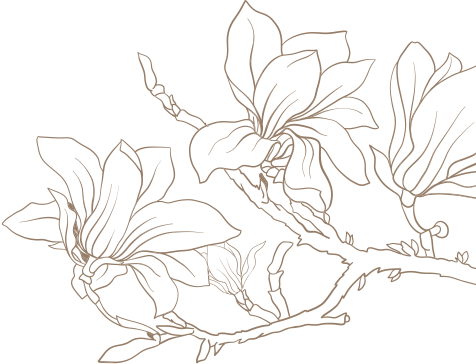
孟秀祥
生态环境学院教授

【教育背景】
2009-2010,美国加州大学戴维斯校区(UC Davis),环境科学及政策系,访学;
2005-2008,华东师范大学生命科学学院,博士后;
2003-2004,南非University of Pretoria农学院,访学;
1999-2002,中国科学院,博士。
【工作经历】
奖励及学术称号
百千万人才工程国家级人选、国务院政府特殊津贴、新世纪优秀人才支持计划、山西省“三晋英才”支持计划高端领军人才、四川天府学者、西藏柔性引进高端领军人才、福建科技创新领军人才;
北京市教育教学成果奖(高等教育)二等奖;国家民委科研奖三等奖;国家民委科研奖优秀奖;世界银行“中国发展市场项目”一等奖;
学术兼职
教育部高校教育指导委员会委员;中国中药协会药用动物保育专委会副主任委员兼秘书长;中国生态学会动物生态专业委员会委员;中国动物学会兽类学分会理事;中国生态学会民族生态专业委员会委员;北京动物学会 常务理事;北京生态学会 常务理事;
【学术科研】
2014.01 至 今:中国人民大学 环境学院,教授;
2007~2013: 中央民族大学 生命与环境科学学院,教授;
2004~2006: 中央民族大学 生命与环境科学学院,副教授;
2002~2004: 中央民族大学 生命与环境科学学院,讲师。
【社会服务】
主要从事生态环境资源保育、管理及可持续利用方面的科研及实践,在生物多样性保育等方面的研究形成了鲜明特色,在药用动物保育、资源安全及可持续利用方面具相对优势;主持科研项目40余项,发表学术论文200余篇。
部分论文如下:
1) Zhou, X., Lv, Q., Qin, Yu., Yuan, N., Li Y., Zhou, M., Meng, X., 2023, Effects of social stress on welfare of captive male Alpine musk deer: stereotypic behavior, fecal cortisol and musk secretion. Applied Animal Behavior Science 258: 105828.
2) Shen, L., Gao, H., Wu, J. Wang, G., Liu, R., Qi, J., Zhang, X., Zhang, A., Chen, L., Zhang, Y., Wang, C., Qi, D., Wang, Y., Meng, X., 2023, Birth-site habitat selection of wild alpine musk deer in the northeastern Qing-Tibetan Plateau of China. Biologia, 78: 141–147.
3) Wu J., Wang, J., Da, Z., Bu, X., Xiang, R., Shrestha, T., Sheng, Y., Meng, X., 2022, Summer habitat use and coexistence of Chinese goral and Siberian roe deer in Taihang mountain, China. North-Western Journal of Zoology, 18(1): 77-86.
4) Wang, J., Weladjii, R., Meng, X, 2021, Age-related musk secretion and body weight in captive forest musk deer. North-Western Journal of Zoology, 17 (2): 294-298.
5) Wu, J., Wang, J., Zhu, Y., Bu, X., Xiang, R., Lu, Q., Cui, S., Hao, Y., Sheng, Y., Meng, X 2020, Summer habitat selection and impacts of human disturbance on leopard cats. Ecosystem Health and Sustainability, 6:1, 1856630.
6) Zhao, Y., Wang, J., Li, Y., Zhou, M., Weladji, RJ., Bonoan, JT., Meng, X., 2020, Temporal pattern of parturition in captive Alpine musk deer. Biologia, 75(2): 259–266.
7) Wang J., Wang P., Aryal A., Meng, X., Weladji R.B., 2018, Summer habitat selection of reindeer governs on the unprotected forest and human interface in China. Ekológia, 37(2): 112-121.
8) Weladji, R., Body, G., Holand, O., Meng, X., Nieminen, M., 2017, Temporal variation in the operational sex ratio and male mating behaviors in reindeer (Rangifer tarandus). Behavioral Processes 140: 96-103.
9) Shi, Q., Guo, Y., Wang, J., Engelhardt, Weladji, RB., Zhou, Y., Long, M., Meng, X, 2016, Endangered wild yak occurred in the Tibetan Plateau and adjacent regions: population, distribution and conservation perspectives. Journal for Nature Conservation, 32: 35–43.
10) Wang, J. et al. , Meng, X., 2015, Reindeer Ewenki's fading culture. Science, 347(6225): 957.
11) Shresth, B., Meng, X., 2014, Spring habitat preference, association and threats of Himalayan musk deer in Gaurishankar Conservation Area, Nepal. International Journal of Conservation Science, 5: 535-546.
12) Meng, X., Aryal, A., Tait, A., Raubenhiemer, D., Wu, J., Ma, Z., Sheng, Y., Li, D., Liu, F., Meng, F., Wang, P., Zeng, Z., Guo, Y., Ge, X., Shi, Q., Wang, W., 2014, Population trends, distribution and conservation status of semi-domesticated reindeer in China. Journal for Nature Conservation, 22: 539–546.
13) Zhou, XY., Jiao, HW., Dou, YS., Aryal, A., Hu, J., Hu, JC., Meng, XX., 2013,The winter habitat selection of red panda in the Meigu Dafengding National Nature Reserve in the Hengduan Mountains of China. Current Science, 105(10): 1425-1429.
14) Sih, A., Bibian, A., DiRienzo, N., Meng, X., Montiglio, P., Ringleman, K., 2013, On the benefits of studying mechanisms underlying behavior. In: P. Crowley, T. Zentall, eds., Comparative decision making. Oxford University Press.
15) Subedi, A., Aryal, A., Koirala, RK., Timilsina, YP., Meng X., McKenzie, F., 2012, Habitat ecology of Himalayan musk deer (Moschus chrysogaster ) in Manaslu conservation area of Nepal. International Journal of Zoological Research, 8(2): 81-89.
16) Meng, X., Sih, A., Li, H., Cody, N., 2012, Quantified analyses of aggression pattern in a captive population of musk deer. Annals of Animal Science, 12(3): 413–421.
17) Meng. X., Cody, N., Gong. B., Xiang. L., 2012, Stable fight strategies in endangered male musk deer. Animal Science Journal, 83: 617-622.

孟秀祥
生态环境学院教授
【教育背景】
2009-2010,美国加州大学戴维斯校区(UC Davis),环境科学及政策系,访学;
2005-2008,华东师范大学生命科学学院,博士后;
2003-2004,南非University of Pretoria农学院,访学;
1999-2002,中国科学院,博士。
【工作经历】
奖励及学术称号
百千万人才工程国家级人选、国务院政府特殊津贴、新世纪优秀人才支持计划、山西省“三晋英才”支持计划高端领军人才、四川天府学者、西藏柔性引进高端领军人才、福建科技创新领军人才;
北京市教育教学成果奖(高等教育)二等奖;国家民委科研奖三等奖;国家民委科研奖优秀奖;世界银行“中国发展市场项目”一等奖;
学术兼职
教育部高校教育指导委员会委员;中国中药协会药用动物保育专委会副主任委员兼秘书长;中国生态学会动物生态专业委员会委员;中国动物学会兽类学分会理事;中国生态学会民族生态专业委员会委员;北京动物学会 常务理事;北京生态学会 常务理事;
【学术科研】
2014.01 至 今:中国人民大学 环境学院,教授;
2007~2013: 中央民族大学 生命与环境科学学院,教授;
2004~2006: 中央民族大学 生命与环境科学学院,副教授;
2002~2004: 中央民族大学 生命与环境科学学院,讲师。
【社会服务】
主要从事生态环境资源保育、管理及可持续利用方面的科研及实践,在生物多样性保育等方面的研究形成了鲜明特色,在药用动物保育、资源安全及可持续利用方面具相对优势;主持科研项目40余项,发表学术论文200余篇。
部分论文如下:
1) Zhou, X., Lv, Q., Qin, Yu., Yuan, N., Li Y., Zhou, M., Meng, X., 2023, Effects of social stress on welfare of captive male Alpine musk deer: stereotypic behavior, fecal cortisol and musk secretion. Applied Animal Behavior Science 258: 105828.
2) Shen, L., Gao, H., Wu, J. Wang, G., Liu, R., Qi, J., Zhang, X., Zhang, A., Chen, L., Zhang, Y., Wang, C., Qi, D., Wang, Y., Meng, X., 2023, Birth-site habitat selection of wild alpine musk deer in the northeastern Qing-Tibetan Plateau of China. Biologia, 78: 141–147.
3) Wu J., Wang, J., Da, Z., Bu, X., Xiang, R., Shrestha, T., Sheng, Y., Meng, X., 2022, Summer habitat use and coexistence of Chinese goral and Siberian roe deer in Taihang mountain, China. North-Western Journal of Zoology, 18(1): 77-86.
4) Wang, J., Weladjii, R., Meng, X, 2021, Age-related musk secretion and body weight in captive forest musk deer. North-Western Journal of Zoology, 17 (2): 294-298.
5) Wu, J., Wang, J., Zhu, Y., Bu, X., Xiang, R., Lu, Q., Cui, S., Hao, Y., Sheng, Y., Meng, X 2020, Summer habitat selection and impacts of human disturbance on leopard cats. Ecosystem Health and Sustainability, 6:1, 1856630.
6) Zhao, Y., Wang, J., Li, Y., Zhou, M., Weladji, RJ., Bonoan, JT., Meng, X., 2020, Temporal pattern of parturition in captive Alpine musk deer. Biologia, 75(2): 259–266.
7) Wang J., Wang P., Aryal A., Meng, X., Weladji R.B., 2018, Summer habitat selection of reindeer governs on the unprotected forest and human interface in China. Ekológia, 37(2): 112-121.
8) Weladji, R., Body, G., Holand, O., Meng, X., Nieminen, M., 2017, Temporal variation in the operational sex ratio and male mating behaviors in reindeer (Rangifer tarandus). Behavioral Processes 140: 96-103.
9) Shi, Q., Guo, Y., Wang, J., Engelhardt, Weladji, RB., Zhou, Y., Long, M., Meng, X, 2016, Endangered wild yak occurred in the Tibetan Plateau and adjacent regions: population, distribution and conservation perspectives. Journal for Nature Conservation, 32: 35–43.
10) Wang, J. et al. , Meng, X., 2015, Reindeer Ewenki's fading culture. Science, 347(6225): 957.
11) Shresth, B., Meng, X., 2014, Spring habitat preference, association and threats of Himalayan musk deer in Gaurishankar Conservation Area, Nepal. International Journal of Conservation Science, 5: 535-546.
12) Meng, X., Aryal, A., Tait, A., Raubenhiemer, D., Wu, J., Ma, Z., Sheng, Y., Li, D., Liu, F., Meng, F., Wang, P., Zeng, Z., Guo, Y., Ge, X., Shi, Q., Wang, W., 2014, Population trends, distribution and conservation status of semi-domesticated reindeer in China. Journal for Nature Conservation, 22: 539–546.
13) Zhou, XY., Jiao, HW., Dou, YS., Aryal, A., Hu, J., Hu, JC., Meng, XX., 2013,The winter habitat selection of red panda in the Meigu Dafengding National Nature Reserve in the Hengduan Mountains of China. Current Science, 105(10): 1425-1429.
14) Sih, A., Bibian, A., DiRienzo, N., Meng, X., Montiglio, P., Ringleman, K., 2013, On the benefits of studying mechanisms underlying behavior. In: P. Crowley, T. Zentall, eds., Comparative decision making. Oxford University Press.
15) Subedi, A., Aryal, A., Koirala, RK., Timilsina, YP., Meng X., McKenzie, F., 2012, Habitat ecology of Himalayan musk deer (Moschus chrysogaster ) in Manaslu conservation area of Nepal. International Journal of Zoological Research, 8(2): 81-89.
16) Meng, X., Sih, A., Li, H., Cody, N., 2012, Quantified analyses of aggression pattern in a captive population of musk deer. Annals of Animal Science, 12(3): 413–421.
17) Meng. X., Cody, N., Gong. B., Xiang. L., 2012, Stable fight strategies in endangered male musk deer. Animal Science Journal, 83: 617-622.









